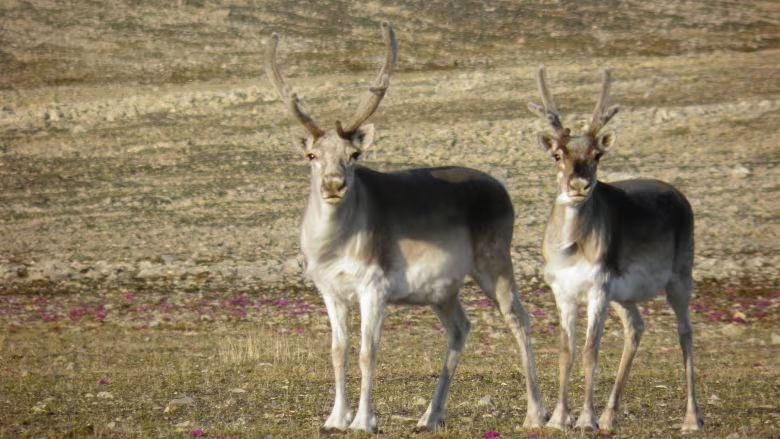Canada News
N.W.T.’s Peary caribou showing signs of recovery, but population still low

Although Peary caribou are the smallest North American caribou, they need a large habitat in which they can move around freely. (Morgan Anderson/Parks Canada)
After a steep decline between 1960 and 1990, the Peary caribou population of the N.W.T. is showing signs of recovery, according to local hunters and researchers.
The subspecies was listed as endangered in the 2000s and 2010s by some wildlife monitoring bodies, but with some population growth observed over the past decades, the N.W.T. assessed and categorized it as a threatened species in 2014 and then again in 2022.
David Kuptana, a caribou hunter and a member of the Olokhaktomiut Hunters and Trappers Committee, says he’s seen the slow recovery with his own eyes, including notable growth in the past few years.
“Since a couple of years now, maybe two or three years now, the population is still going up and it’s like they’re getting healthier and healthier ’cause we’ve been seeing caribous all year round now,” said Kuptana, who lives in Ulukhaktok,
The Peary caribou, one of three caribou groups in the N.W.T., live and travel in small groups on the Arctic islands of N.W.T. and Nunavut. They are the smallest caribou on the continent when it comes to size and stature and are an important source of food for Inuvialuit, particularly residents of Sachs Harbour and Ulukhaktok.
Population is comparatively low
Although reports from N.W.T. say the population is slowly increasing, it’s still not what it used to be. The subspecies’ 2019 population estimate of 7,800 adults is still about 80 per cent lower than it was in the early 1960s, according to the N.W.T.’s 2022 Status Report and Reassessment of Peary Caribou.
In a specific example, the report says the population on Banks Island grew from 1,015 up to 1,913 between 1992 and 2019.
That same report says that the main reasons for the past decline include over-harvesting, predation, reduced food availability due to bad weather, and competition with high numbers of muskoxen.
Kuptana said that large predators, such as wolves and grizzlies, also suppress the Peary caribou, and that the most recent caribou population growth that he mentioned has come after hunters were able to do a predator hunt two years in a row.
“About two to three years ago we had funding for doing a predator hunt … grizzly bears and wolves,” he said.
“The predators are going down so the caribous are not really being bothered by predators … which makes the numbers go up for the Peary caribous,” he said.
An abundance of lichen is also making the population healthy, he said.
Planning for future generations
When a species is listed as threatened, the territory must create a recovery strategy, said Jody Pellissey, chair of the Conference and Management Authorities which brings together the groups, boards and governments responsible for conservation and species at risk.
The territory’s strategy, which includes the already existing federal strategy, was released this month.
“The strategy highlights work that’s already happening in the N.W.T. to conserve Peary caribou, but it also establishes population and distribution objectives and research and management approaches that will help to address the threats that are facing the Peary caribou,” she said.
Primary goals of the strategy include maintaining a healthy, self-sustaining caribou population for future generations, and having a population large enough to meet the food and hunting needs of Inuit and Inuvialuit.
Pellissey said that education, population monitoring and voluntary hunting restrictions have been, and will continue to be, an important part of the strategy.
“Work has already been ongoing with Indigenous communities to limit harvest by Indigenous communities so that the populations could recover,” she said.
Looking ahead, Kuptana, who is invovled in the recovery strategy, said he’s concerned about Peary caribou migration patterns.
Due to climate change, sea ice hasn’t been as thick and there’s more open water during winter, which could make it hard for the caribou to move between islands, he said.
“I don’t know what’s going to happen but right now our [Peary] caribous are starting to come back up, so we are very happy and we just take what we only need, and you know, just to keep us going,” he said.





















